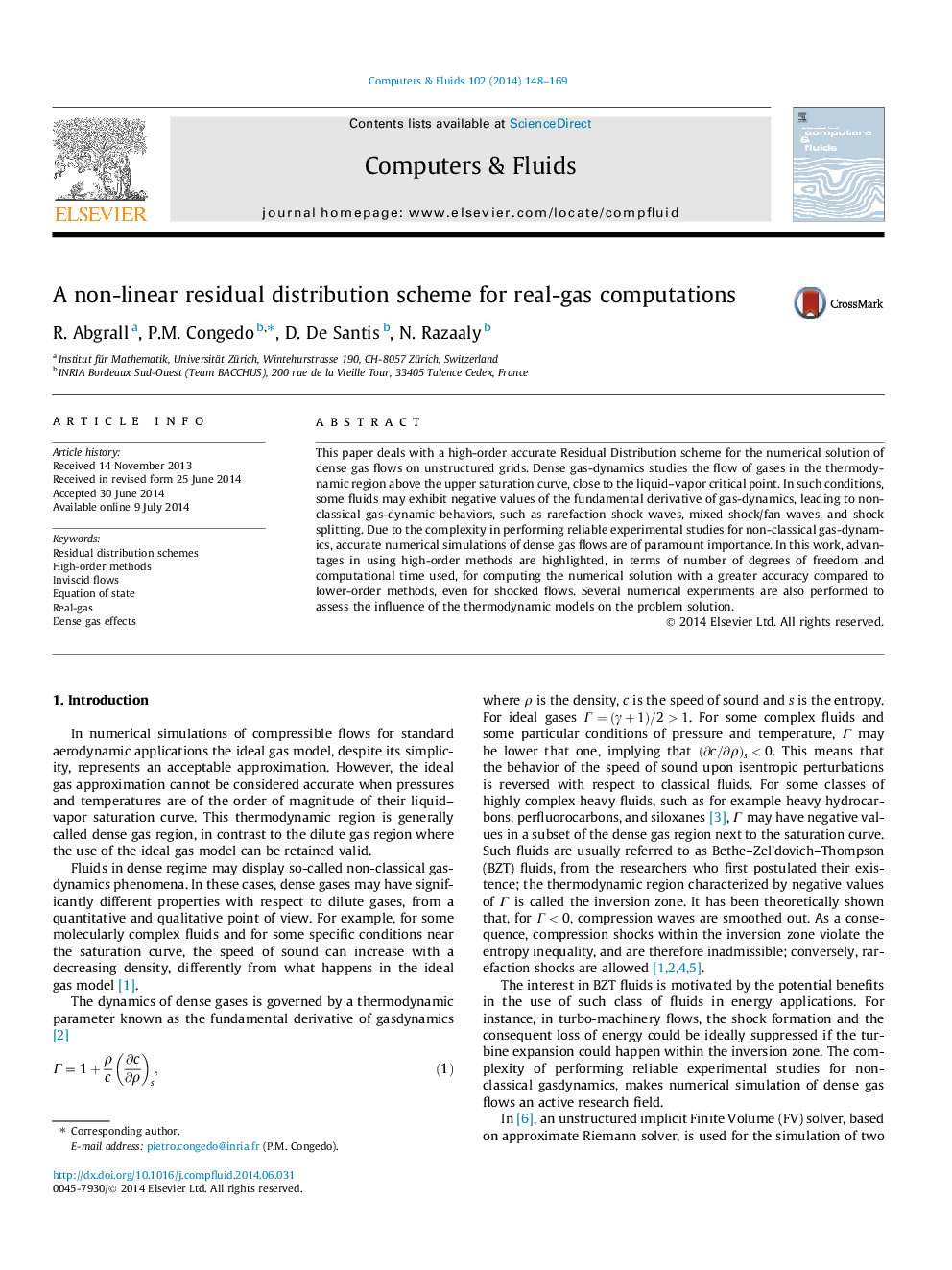| کد مقاله | کد نشریه | سال انتشار | مقاله انگلیسی | نسخه تمام متن |
|---|---|---|---|---|
| 7157142 | 1462708 | 2014 | 22 صفحه PDF | دانلود رایگان |
عنوان انگلیسی مقاله ISI
A non-linear residual distribution scheme for real-gas computations
ترجمه فارسی عنوان
یک طرح توزیع غیرقطعی باقی مانده برای محاسبات واقعی گاز
دانلود مقاله + سفارش ترجمه
دانلود مقاله ISI انگلیسی
رایگان برای ایرانیان
کلمات کلیدی
ترجمه چکیده
این مقاله با یک طرح توزیع دقیق باقیمانده بالا برای راه حل عددی جریانهای متراکم گاز روی شبکه های بدون ساختار، در نظر گرفته شده است. گاز پویای انبوه، جریان گازها را در منطقه ترمودینامیکی بالای منحنی اشباع بالا، نزدیک به نقطه بحرانی مایع، بررسی می کند. در چنین شرایطی، برخی مایعات ممکن است مقادیر منفی مشتق اساسی گاز پویایی را نشان دهند، که منجر به رفتارهای غرقابانه غول پیکر گاز مانند امواج شوک رطوبت، امواج ترکیبی شوک / فن و تقسیم شوک می شود. با توجه به پیچیدگی در انجام مطالعات تجربی قابل اطمینان برای پلاسما گاز غیر کلاسیک، شبیه سازی دقیق عددی جریان گاز انبوه از اهمیت اساسی برخوردار است. در این کار، مزایای استفاده از روش های مرتب بالا، از لحاظ تعداد درجه آزادی و زمان محاسباتی مورد استفاده برای محاسبه راه حل عددی با دقت بیشتری نسبت به روش های پایین تر، حتی برای جریان های تکان دهنده، برجسته می شود. چندین آزمایش عددی برای ارزیابی تاثیر مدل های ترمودینامیکی بر راه حل مشکل انجام شده است.
موضوعات مرتبط
مهندسی و علوم پایه
سایر رشته های مهندسی
مکانیک محاسباتی
چکیده انگلیسی
This paper deals with a high-order accurate Residual Distribution scheme for the numerical solution of dense gas flows on unstructured grids. Dense gas-dynamics studies the flow of gases in the thermodynamic region above the upper saturation curve, close to the liquid-vapor critical point. In such conditions, some fluids may exhibit negative values of the fundamental derivative of gas-dynamics, leading to non-classical gas-dynamic behaviors, such as rarefaction shock waves, mixed shock/fan waves, and shock splitting. Due to the complexity in performing reliable experimental studies for non-classical gas-dynamics, accurate numerical simulations of dense gas flows are of paramount importance. In this work, advantages in using high-order methods are highlighted, in terms of number of degrees of freedom and computational time used, for computing the numerical solution with a greater accuracy compared to lower-order methods, even for shocked flows. Several numerical experiments are also performed to assess the influence of the thermodynamic models on the problem solution.
ناشر
Database: Elsevier - ScienceDirect (ساینس دایرکت)
Journal: Computers & Fluids - Volume 102, 10 October 2014, Pages 148-169
Journal: Computers & Fluids - Volume 102, 10 October 2014, Pages 148-169
نویسندگان
R. Abgrall, P.M. Congedo, D. De Santis, N. Razaaly,
